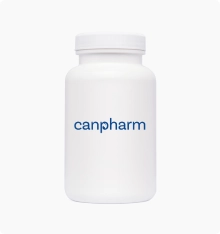Vaginal Discharge
-
Description
-
Signs & Symptoms
-
Anatomy
-
Cause
-
Diagnosis
What is Vaginal Discharge?
Vaginal discharge is a natural part of a woman’s bodily function and the fluid that is produced in this part of a woman’s body serves to keep it clean and free from infection. The color and consistency of the discharge will vary based on health conditions or statuses in the body. Vaginal discharge is a normal occurrence when a woman starts to ovulate and then once she has finished menstruating each month.
Bloody vaginal discharge between periods is referred to as spotting, and it can also be an indicator a woman has become pregnant. Vaginal discharge patterns can diminish for a woman once she becomes menopausal.
What Causes Vaginal Discharge
Normal discharges like the ones we talked about above to start are natural parts of reproductive organ function and will happen for women during the years of their life when they are ovulating. Having a normal functioning reproductive cycle is going to be the primary explanation for what causes vaginal discharge most of the time. The only exception to this will be infections or other temporary conditions in this area of the body.
Bacterial vaginosis is one of them and will create a discharge that isn’t colored much but will have a strong and often foul odor to it. Trichomoniasis is a parasitic infection that can cause vaginal discharge, and it is usually the result of sexual contact in the same way it is for bacterial vaginosis. STIs like gonorrhea and chlamydia may be behind what causes vaginal discharge, and pelvic inflammatory disease, HPV infection, or cervical cancer may be the cause of it too.
Types of Vaginal Discharge
Women who are in their reproductive years will have clear and watery discharge as they start to ovulate, and also when they are sexually aroused or pregnant. During ovulation the discharge may become stretchy and mucus-like. It may change to being more whitish in color at the end of a menstrual cycle, or alternately it may be brown or even bloody at this time.
Yellow or green in color is also possible with types of vaginal discharge. This may be because of bacteria being present and may be an indication that an infection is underway. A thick and white vaginal discharge may be the result of a yeast infection.
Vaginal Discharge Treatment
The most conventional approach to vaginal discharge treatment will only be taken if the discharge is seen to be the result of an infection, and in these instances the woman will be advised to take antibiotic medications like Cipro or Cleocin to clear the infection quickly and put an end to the vaginal discharge occurring because of it.
In other instances where the discharge is related to the woman’s reproductive cycle or sexual health there will be no need for treatment as this is a beneficial part of her body’s normal function.
Signs & Symptoms
- Clear and watery discharge
- Stretchy and mucus-like discharge
- Whitish discharge
- Brown or bloody discharge
- Yellow or green discharge
- Thick and white discharge
- Foul-smelling discharge
Anatomy
- Vagina
- Cervix
- Uterus
- Ovaries
- Fallopian tubes
Cause
- Normal reproductive cycle
- Bacterial vaginosis
- Trichomoniasis
- Gonorrhea
- Chlamydia
- Pelvic inflammatory disease
- HPV infection
- Cervical cancer
Diagnosis
- Physical examination
- Medical history
- Vaginal swabs
- Blood tests for infections



